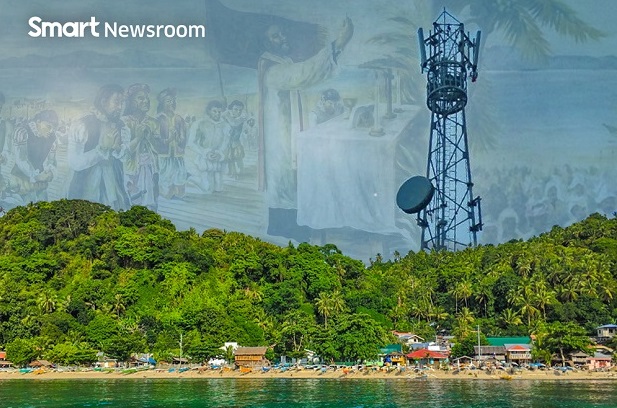Limasawa, an island whose historical significance dates back five centuries, has entered the age of high-speed Internet with the recent launch of Smart Communications’ LTE network there. This comes months ahead of the start of the yearlong celebration of the 500th anniversary of the Christianization of the Philippines.

Located off the tip of Southern Leyte province, Limasawa plays a central role in the celebration: it Is the site of the first Catholic Mass in the country held on Easter Sunday in 1521. The moment will be among the events to be commemorated during the quincentennial anniversary celebration.
“Smart LTE will be of great help with our virtual activities and other strategies to promote the island,” said Limasawa mayor Melchor Petracorta. “Connectivity is crucial to increasing people’s awareness…Overall, it will contribute to the island’s economic development,” he said.
Prior to the rollout of Smart LTE in the area, Limasawa island greatly depended on local bandilyos (announcements) and posts on barangay bulletin boards. Amid technological advances, Limasawa had been lagging behind progressive communities.
“Now previously unserved areas are reached by Smart connectivity. This would also improve our disaster preparation and response, and enable teachers and learners adapt to blended learning and online lessons,” Petracorta added.
The historic Christian celebration was supposed to start last year but had to be moved this year due to Covid-19 restrictions. Catholic Church leaders had announced that the yearlong event will start this April and culminate in April 2022.
Aside from the first Mass, other historic events to be commemorated are the first baptism of converts in Cebu, and the arrival of the Sto. Niño. Fr. Ric Reyes, secretariat head of the 456thFiesta Senyor, highlighted the strong connection between Senor Sto. Niño and Limasawa.
Limasawa figured early in the story of Ferdinand Magellan and the Spanish expedition that found its way to our shores in the search of the Spice Islands. Chronicler Antonio Pigafetta wrote that the Easter Sunday Mass was celebrated by expedition chaplain Fr. Pedro Valderama on March 31, 1521 in a place he identified as “Mazaua.”
But in the early centuries after Magellan’s landing, it was thought that the Mass was held in Butuan. In fact, a now-destroyed monument called “Immortal Magellan”, which used to stand near the mouth of the Agusan River in what is known today as the municipality of Magallanes, was built to commemorate this Mass.
The island with beautiful beaches and lagoons was first declared as the site of the first Mass in 1921, when the country celebrated of the 400th anniversary of Magellan’s arrival.
Butuan had contested the declaration.
Close to a century and three academic panels later, however, Limasawa was upheld yet again as site of the First Easter Mass. The National Historical Commission of the Philippines (NHCP) affirmed last August the findings of the panel headed by historian and National Artist Dr. Resil Mojares. The Catholic Bishops Conference of the Philippines supported the panel’s recommendation.
The recognition is for the First Easter Mass, the Mojares panel said, to distinguish it from undocumented Masses the expedition “probably celebrated when they were at sea in the Samar area.” The Easter Mass was more significant historically because “it was documented by Pigafetta, happened on Philippine soil and local residents participated.”
Pride of place runs deep among the people of Limasawa. At the Shrine of the First Mass, the knowledgeable guide passionately defends their claim to the site’s historic significance.




